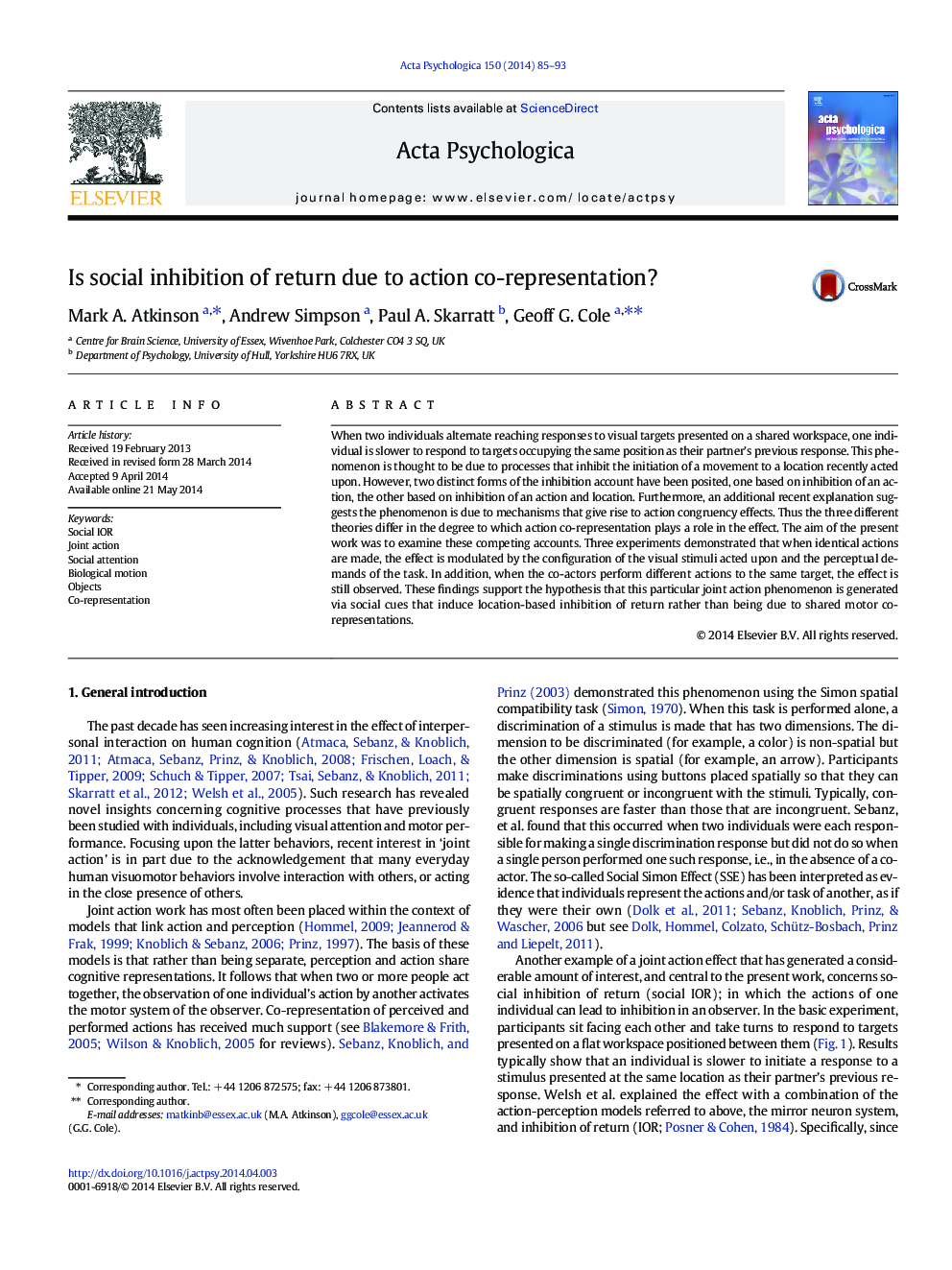| Article ID | Journal | Published Year | Pages | File Type |
|---|---|---|---|---|
| 919735 | Acta Psychologica | 2014 | 9 Pages |
•We test conditions when inhibition of return following the action of another is observed.•Inhibition depends upon the visual organization of the response environment.•Inhibition was unaffected by performing an identical action to another.•Inhibition was correlated with reaction time in an individual cueing task.
When two individuals alternate reaching responses to visual targets presented on a shared workspace, one individual is slower to respond to targets occupying the same position as their partner’s previous response. This phenomenon is thought to be due to processes that inhibit the initiation of a movement to a location recently acted upon. However, two distinct forms of the inhibition account have been posited, one based on inhibition of an action, the other based on inhibition of an action and location. Furthermore, an additional recent explanation suggests the phenomenon is due to mechanisms that give rise to action congruency effects. Thus the three different theories differ in the degree to which action co-representation plays a role in the effect. The aim of the present work was to examine these competing accounts. Three experiments demonstrated that when identical actions are made, the effect is modulated by the configuration of the visual stimuli acted upon and the perceptual demands of the task. In addition, when the co-actors perform different actions to the same target, the effect is still observed. These findings support the hypothesis that this particular joint action phenomenon is generated via social cues that induce location-based inhibition of return rather than being due to shared motor co-representations.
